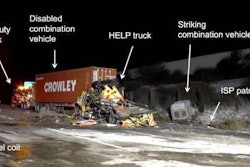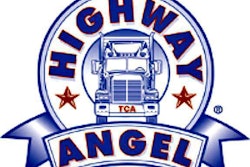You know that bridge you drove over earlier today?
Well, it’s possible that it was one of 58,500 bridges in the U.S. that a leading trade association considers “structurally deficient.”
Review of DOT data shows that more than 58,000 bridges in the U.S. are considered ‘structurally deficient.”The American Road & Transportation Builders Association’s annual review of U.S. Department of Transportation data found that 9.5 percent of America’s 610,000 bridges are classified as structurally deficient. Still, they are crossed some 204 million times each day, according to the association.
If placed end-to-end, the deck surfaces of the nation’s structurally deficient bridges would stretch from New York City to Miami (1,340 miles), according to the association.
According to the ARTBA, bridges “are rated on a scale of zero to nine—with nine meaning the bridge is in “excellent” condition. A bridge is classified as structurally deficient and in need of repair if its overall rating is four or below.”
Where are these troubled bridges?
Iowa leads the way with the most bridges on the list with 5,025, followed by
- Pennsylvania (4,783)
- Oklahoma (3,776)
- Missouri (3,222)
- Nebraska (2,474)
- Kansas (2,303)
- Illinois (2,244)
- Mississippi (2,184)
- North Carolina (2,085)
- California (2,009)
[gtbutton link=”https://www.artba.org/2016-u-s-deficient-bridges/”]See a State-By-State Map of ‘Structurally Deficient’ Bridges[/gtbutton]
At least 15 percent of bridges in Rhode Island, Pennsylvania, Iowa, South Dakota, Oklahoma, Nebraska, North Dakota and West Virginia appear on the list.
Almost all of the 250 most heavily crossed structurally deficient bridges are on urban highways, particularly in California. Nearly 85 percent were built before 1970.
ARTBA states that, while these bridges may not be immediately unsafe, the report is meant to help reveal to the public and policymakers that the bridges have structural deficiencies in need of repair.
The organization said at the rate of last year’s bridge repair, in which 2,574 bridges came off the structurally deficient list, it would take 21 years before all the bridges on the list could be fixed or replaced.









